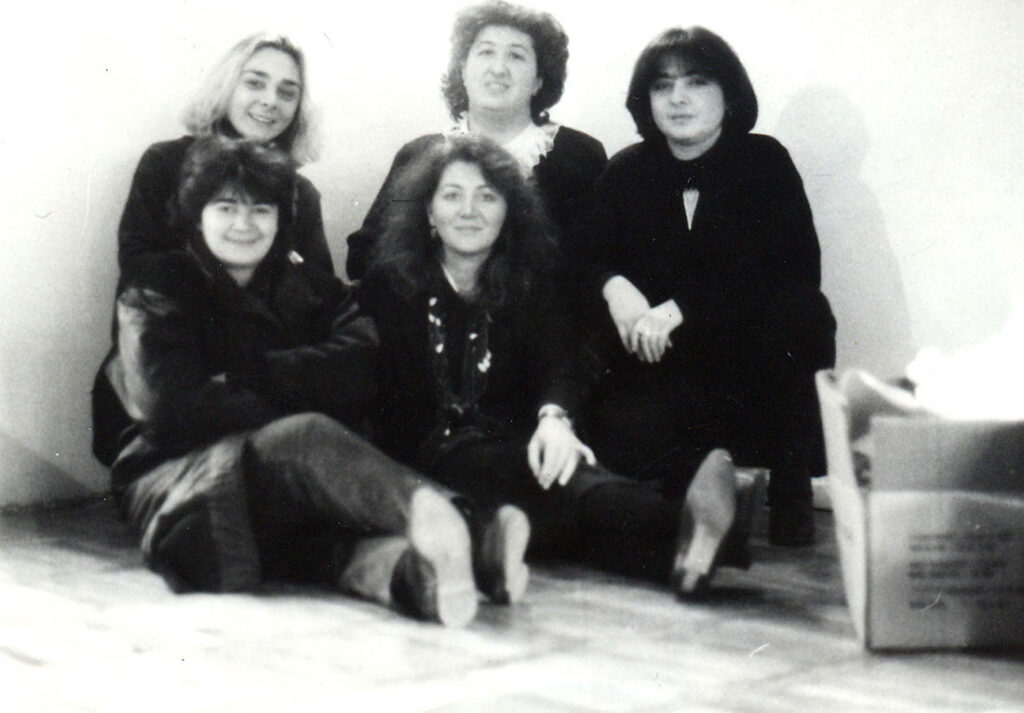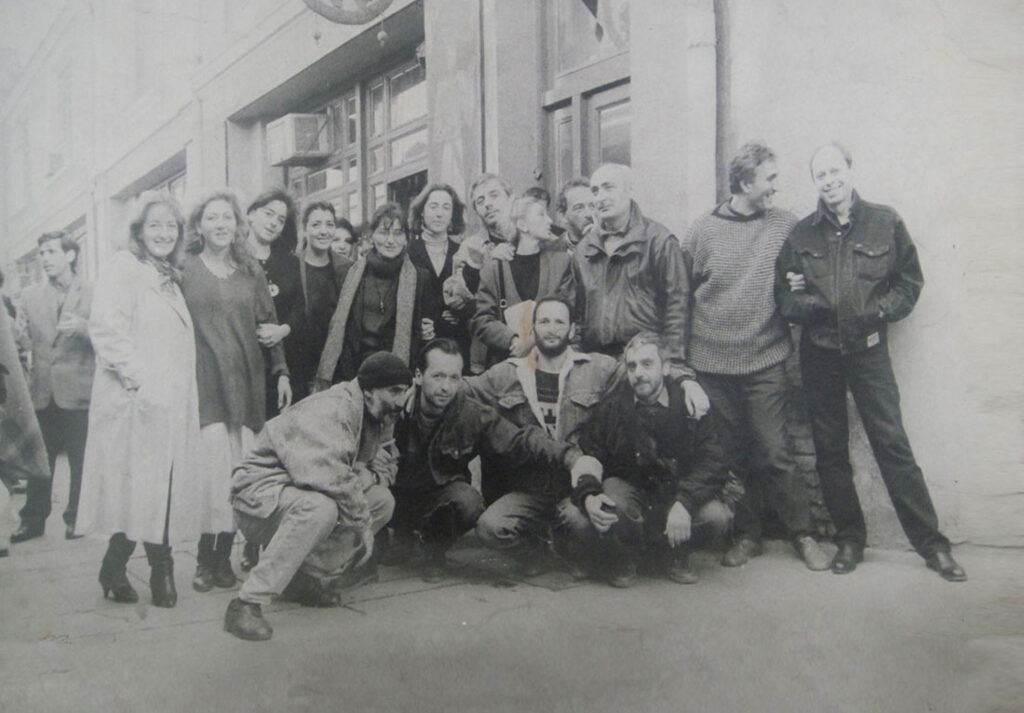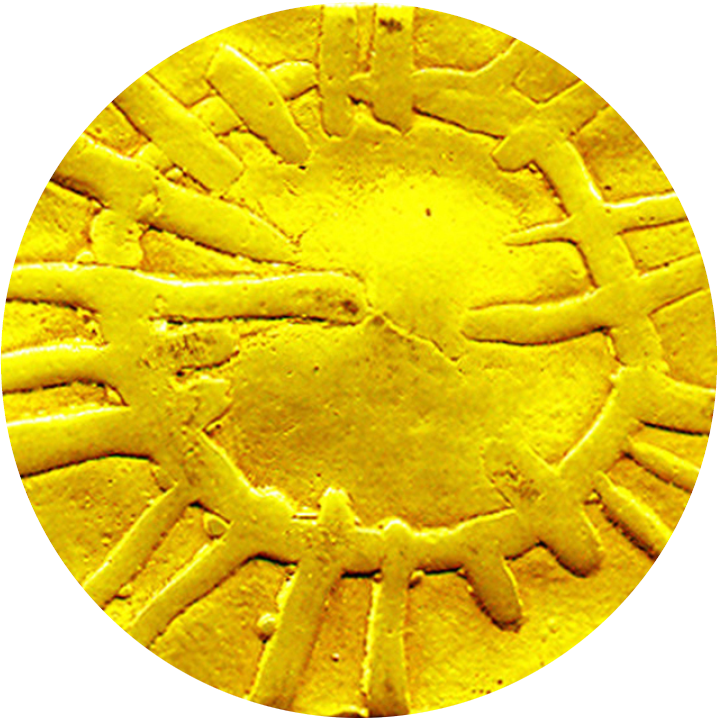About
Baia Gallery opened its doors in 1992. It is the first private gallery of the post-Soviet period that is still in operation to this day.
The gallery works in two directions:
XX Century – cultural heritage from private collections.
(Modernism, Avant-garde, Social Realism, and Trans-avant-garde)
XXI Century – contemporary art.
The gallery studies little-known and unique materials from private collections, acts as an art advisor, and holds a leading position in terms of designing private and institutional collections. The gallery collaborates with various museums and institutions, and publishes relevant books and catalogues. The gallery database contains more than 7,000 images and archival documents on Georgian art.
Joint projects (exhibitions, auctions, publishing):
Bonhams Auction House; Sotheby’s Auction House, London, UK; Ministry of Culture, Sport and Youth of Georgia; The National Gallery, Tbilisi, Georgia; Art Palace, Tbilisi, Georgia; Tbilisi MOMA, Georgia; TBC Bank, Georgia; House Museum of Alexander Chavchavadze, Georgia; David Kakabadze Foundation, Georgia; Irakli Parjiani Foundation, Georgia; Merab Abramishvili Foundation, Georgia.”
Art consultancy and collection management:
- The National Museum, Tbilisi, Georgia; Art Palace, Tbilisi, Georgia; The National Gallery, Tbilisi, Georgia; Culture Center – Atinati Foundation, Gallery CH 64, Tbilisi, Georgia.
- Drawing up of an insurance package for works of art. Private collections: “Europalia – Georgia,” Brussel, Belgium – 2023.
- Art Consultancy – compilation of private collections, expertise consultation, determination of prices and investment status.
Art fairs:
TAF Tbilisi Art Fair – 2018, 2019, 2022 Tbilisi, Georgia; Abu Dhabi, United Arab Emirates – 2023
In Tbilisi, the gallery operates in two exhibition spaces:
Baia Gallery, Mtatsminda (Tbilisi, 0108, 19a Ingorokva Street) which focuses on the cultural heritage of the XX century.
Baia Gallery, Vake (Tbilisi, 0179, 68 Razmadze Street) which focuses on contemporary art.
Team

Baia Tsikoridze

Nino Tchiabrishvili

Sophia Merabishvili

Keti Kartvelishvili

Iako Rusadze

Nato Shushania

Liza Tkemaladze

Anna Dilbarian
Read More
 History of the Gallery
History of the Gallery
Baia Gallery has existed for 30 years. It was founded in 1992 in post-Soviet Georgia, and remains the only private gallery still operating in the field. Its establishment during times of war and crisis was a completely paradoxical event, as it was forced to commence working under conditions completely unsuitable for the existence and development of a gallery: the civil war in Tbilisi had ended the year before, and the war in Abkhazia was still ongoing.
This was a time when the world was collapsing in front of our eyes… in 1989-1991, the Painters’ House where I used to work found itself in the middle of a political confrontation. In fact, it was operating on a battleground. Historically, this location has always been at the epicenter of political and armed conflicts. In 1921, the place witnessed a decisive battle when Georgia lost its independence. 70 years later, the drama of regaining independence occurred once again at exactly the same spot. During this period, cultural facilities completely ceased operations as a result of military activities. The Painters’ House, which functioned between 1980 and 1990 as the only multifunctional exhibition center in Georgia, was severely damaged during the events of April 9, 1989, and was completely destroyed during the Civil War of 1991. Merab Abramishvili’s studio burnt down and seventeen of his works were lost, and the Institute of Georgian Art History on the Rustaveli Avenue was also consumed by fire. The National Gallery was damaged, while the Historical Museum and the Museum of Fine Arts were closed temporarily closed. None of the state galleries were functioning, and private galleries simply did not exist. It was a completely unsuitable environment in which to set up a gallery and art business – unknown concepts for the Soviet Union and a socialist economy. In addition, in the times of post-Soviet agony: war, political cataclysms, and financial collapse, the existence of a gallery was unthinkable. Amid rising and unpredictable inflation, this sphere appeared to be completely paralyzed. Electricity was supplied to the country for only a few hours a day, while gas and alternative fuels were only available in limited quantities. Consequently, buildings were without heating, and communications systems functioned with severe delay. It was very extremely difficult, sometimes even impossible to meet basic human needs. We were practically living in a state of a disaster, and found ourselves face to face with constant emotional stress. Priorities were reduced to the maintaining of life and vital resources. The working conditions and infrastructure of any sphere were rendered completely dysfunctional.
Under these circumstances, two of my friends (Keti Shubitidze and Tea Tabatadze) and I completely spontaneously established the private gallery Orient (known today as Baia Gallery). Artist Nana Churgulia proposed the gallery’s name. Apart from its etymological meaning, the word was also linked to the name of the building where the exhibition center Artists’ House had operated in the 1980s. Before that, until the 1930s, the building had housed the Hotel Orient and the hall of the Georgian Artists’ Association, which was renowned for its exhibitions.


It is curious, but war, crisis, and the survival instinct led to the establishment of a gallery, and this fact became the indicator of a vital impulse against the grim surroundings. It was of particular importance to define our own position towards events that we could not change, but could nevertheless use to uncover a sense of existence. In our case, art became such a concept, and in 1992 in one of the old parts of Tbilisi, on the then deserted and empty Shardeni Street, we discovered a small, old two-story building – the former architectural space of the Academy of Arts – and we began working not only for the gallery, but for any communication. We heated the building by means of a fireplace, cut firewood in the street; electricity was supplied according to a schedule, and the telephone was not working. At the end of the 20th century, we found ourselves in medieval conditions.
Existence was regressive, but the field we chose was progressive.
For us artists and many others who engage in the field, this space became a place of survival – not only physically and financially, but also in terms of hope. Here we tried to build a structure in a destructive environment, to establish a peaceful formation against the backdrop of war: to bring together positive emotions in contrast to the deeply harsh psychological state caused by chaos. The existence of a gallery in this space was the objective that we pursued with stubborn perseverance and daily work under conditions of darkness, communications collapse, and financial crisis – in an absurd and catastrophic environment. We worked without any guarantees or insurance, in spite of the unforeseen risks and unpredictable dangers, chances of being robbed, mugged, or threatened. We often took spontaneous decisions and managed to deal with unknown regulations of administrating private structures, and undertook actions completely unthinkable for people who had only a short while ago lived in the Soviet reality.
It was a test of endurance: in other words a long-term marathon.
During the ongoing political rallies concerning the demands of territorial integrity, independence and freedom, human rights, and war – when the fighting took on forms inappropriate for human behavior and at the same time generally hostile to combat – art remained a field that was governed by different laws. Neither was territory defined, nor did freedom require any legitimacy. Art always creates non-standard formations beyond any standardized ones, where identity is conditional and transformation magical, and this offered the only way to maintain emotional balance in times of crisis. Our gallery, for some time, turned into the only point where we could shift the situation governed by the rule of war into another dimension. This is how we created a small creative space (our gallery measured sixty-six square meters in total), but according to the number of people involved in the process, it was a large “territory” governed by personal consciousness and not by any particularly aggressive and ruthless collective unconsciousness.
Under such conditions, the gallery’s existence was made possible owing to several factors, and above all the mutual desire for collaboration between the artists and the gallery.
Baia Gallery was the gallery of the 1980s generation, or the gallery of those artists who started working in the 1980s. Until now it remains the main platform of this generation. This group unites the artists who were active at the end of the 20th century and who belonged to the Georgian Trans-avant-garde. This is my generation.
The 1980s was a strange time for Georgian art and could be described as the beginning of the end when the Soviet era was heading towards its real and catastrophic end on the threshold of a new and completely uncertain future. The ongoing process was the most difficult: war, chaos, economic crisis, a disaster area that involved everyone. The fate of history determined the fate of people; i.e. it was impossible to personally choose one’s desired objective conditions. The only solution was to escape from the undesirable environment and try to move “elsewhere,” or to create an imaginary model of the desired universe.
The work of the 1980s generation is a fetishization of the desire to escape; or rather a wish to create an alternative, ideal world and “move” into it. The positional need was to create a space that would be based on the personal, autonomous “worlds” of these artists. Despite the differences between them, they seem to be united by a common desire to oppose the deconstructive environment and time with a universal model of values – that is, to transform the chaos into the cosmos.
Baia Tsikoridze
